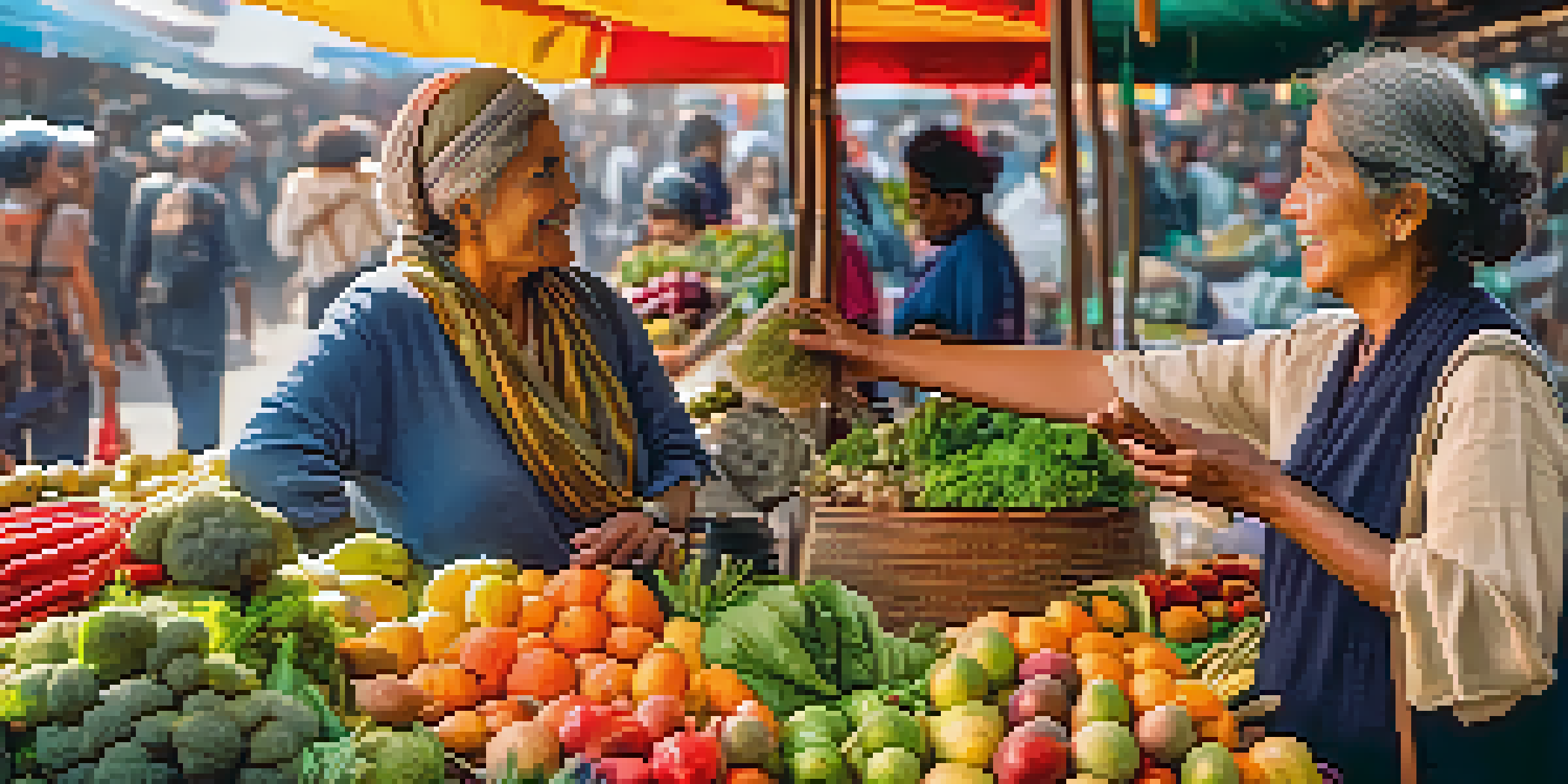Consent in Travel Photography: Why It Matters

Understanding Consent: A Foundation for Travel Photography
Consent in travel photography is the agreement between the photographer and the subject regarding the use of their image. It’s essential to understand that just because you have a camera, it doesn’t grant you the right to capture anyone without their permission. This mutual respect fosters a positive interaction and can make the experience more enjoyable for everyone involved.
The camera is an instrument that teaches people how to see without a camera.
When you ask for consent, you're not just following an ethical guideline; you're also opening the door to richer storytelling. A willing subject is often more relaxed and engaged, leading to more authentic and compelling photographs. Think of it like making a new friend; the more comfortable they feel with you, the more genuine the connection becomes.
Moreover, consent is not just about ethical practices; it’s also about legality. In many places, taking someone's photo without permission can result in legal disputes. By prioritizing consent, you safeguard yourself and ensure that your travel photography is both respectful and lawful.
Cultural Sensitivity: A Key Aspect of Consent
Every culture has its own norms and practices regarding photography, making cultural sensitivity crucial when seeking consent. In some places, taking photos of people can be seen as intrusive or disrespectful. Understanding these nuances can significantly enhance your travel photography experience and build meaningful connections.

For instance, in certain indigenous communities, photography might be viewed as a way of taking something away from the subject, such as their spirit. Being aware of such beliefs can guide you in approaching individuals with respect and understanding. It’s not just about getting the shot; it’s about honoring the people and their stories.
Consent is Essential in Photography
Obtaining consent fosters respect and enriches the storytelling aspect of travel photography.
Engaging with locals and asking about their feelings toward photography can also provide insight into their cultural practices. This dialogue not only enriches your photography but also fosters trust and respect, making your journey more rewarding.
The Role of Body Language in Seeking Consent
Body language plays a significant role in obtaining consent during travel photography. Sometimes, words alone aren't enough to convey your intentions. Observing the subject's non-verbal cues can provide valuable insights into their comfort level and openness to being photographed.
Photography is a way of feeling, of touching, of loving. What you have caught on film is captured forever... It remembers little things, long after you have forgotten everything.
For example, if someone seems hesitant or avoids eye contact, it may be a sign that they are not comfortable. In such cases, it’s crucial to be respectful and either approach the situation differently or walk away. Remember, capturing a moment should never come at the expense of someone's comfort or feelings.
Additionally, positive body language can help establish rapport. A warm smile, friendly gestures, and an approachable demeanor can make individuals feel more at ease, leading to natural and candid photographs. Your body language can be just as telling as your words.
How to Ask for Consent: Tips and Techniques
Asking for consent doesn't have to be a daunting task. A simple and polite approach often works best. Start by introducing yourself and explaining what you’re doing, which can help demystify the situation and make the subject feel more comfortable.
For example, you might say, 'Hi! I'm a photographer traveling through the area, and I would love to take your portrait if you’re okay with that.' This straightforward request, paired with a friendly smile, can create a welcoming atmosphere for dialogue.
Cultural Sensitivity Matters
Understanding cultural norms around photography helps build trust and enhances the overall experience.
Additionally, consider the language barrier that may exist. If you don’t speak the local language, using translation apps or showing examples of your work can help convey your intentions. Remember, the goal is to communicate respect and appreciation for the subject’s willingness to participate.
Respecting 'No': The Importance of Boundaries
When seeking consent, it's vital to respect the subject's decision, especially if they say 'no.' Everyone has the right to their privacy and comfort, and acknowledging their boundaries is essential. Pressuring someone to change their mind can lead to a negative experience for both parties.
In some cases, a polite refusal can open up further conversation. If someone declines, you might ask if they’d be comfortable with taking a picture of their surroundings instead. This shows that you respect their wishes while still allowing for the possibility of capturing the essence of the moment.
Ultimately, respecting 'no' not only reflects your integrity as a photographer but also builds trust within the community. People are more likely to engage with you in the future if they see that you honor their boundaries.
Benefits of Consent in Travel Photography
Obtaining consent has numerous benefits, both for you as a photographer and for your subjects. First and foremost, it establishes a relationship built on trust, which can lead to more authentic and engaging photographs. When people feel valued and respected, they tend to open up, allowing for richer storytelling.
Furthermore, images taken with consent are often more impactful. They carry the weight of the subject's story and perspective, rather than just being a snapshot of a moment. This can enhance your portfolio and resonate more deeply with your audience.
Respecting Boundaries Builds Trust
Acknowledging a subject's refusal to be photographed is crucial for maintaining integrity and fostering future interactions.
Lastly, respecting consent can lead to positive word-of-mouth within communities. When people feel good about their interactions with you, they are more likely to share their experiences and encourage others to engage with you as well.
Navigating Social Media and Consent
In today’s digital age, sharing photos on social media has become a norm, but it also raises the question of consent. Just because you have permission to take a photo doesn't always mean you have the right to share it online. Understanding this distinction is critical for ethical travel photography.
When you intend to post a photo online, it’s courteous to ask for explicit consent to share the image, especially if it features recognizable individuals. You might say, 'I’d love to share this photo on my Instagram; would that be alright with you?' This consideration shows respect for their privacy and allows them to make an informed decision.

Moreover, sharing images without consent can lead to backlash and negatively impact your reputation. By being thoughtful about how you use your photographs, you not only protect yourself but also honor the trust others place in you during your interactions.